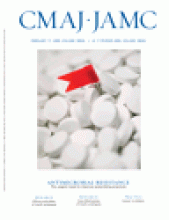Your Inner Fish: A Journey into the 3.5-Billion-Year History of the Human Body Neil Shubin Pantheon Books; 2008. 218 pp $28.00
For Neil Shubin, the human body is anything but perfect. In Your Inner Fish, Shubin's first popular science book, this professor of anatomy and organismal biology asserts that modern humans are the result of a convoluted and often illogical evolutionary path from life as water-living animals to life on land. Far from being ideally designed for life as large-brained bipedal hominids, Shubin says that our ability to walk on 2 legs, to talk, think and use our fingers is the result of evolutionary jerry-rigging. In fact, our body plan has been stretched so far from its fish origins that we have become vulnerable to breakdowns and odd quirks, such as ruptured disks and hiccups.
Photo by: Random House/Pantheon
Shubin, who teaches at the University of Chicago and is provost of the Chicago-based Field Museum, has spent much of his life searching for fossils that trace the movement of life out of water and onto land. His most remarkable discovery is tiktaalik (meaning large fresh-water fish in Inuktitut), a 375-million-year-old fossil discovered in Nunavut in 2004. Tiktaalik's body structure has features that represent early changes in fish bodies that eventually allowed them to move onto land and become mammals and other land-based animals. “Like a fish, it has scales on its back and fins with fin webbing. But, like early land-living animals, it has a flat head and neck. And when we look inside the fin, we see bones that correspond to the upper arm, the forearm, even parts of the wrist. The joints are there too: this is a fish with shoulder, elbow and wrist joints. All inside a fin with webbing.” To Shubin, tiktaalik's transitional body structure is proof of life's remarkable evolutionary path from water to land.
Rather than being the end product of an evolutionary hierarchy, according to Shubin, human beings are an integral part of a complex, partially understood evolutionary story. Part of this story can be told by exploring the basic structure of fish and animal embryos. Shubin describes the work of Karl Ernst von Baer, a 17th-century natural philosopher who, in an attempt to discover a common plan for all life on earth, discovered that all a chicken's organs develop from 1 of 3 layers of tissue in the developing embryo, called “germ layers.” Von Baer then compared the 3 layers in the chicken embryo with the embryos of fish, reptiles and mammals. Shubin writes that “[E]very animal organ originated in one of these three layers. Significantly, the 3 layers formed the same structures in every species. … No matter how different the species look as adults, as tiny embryos they all go through the same stages of development.”
Shubin ends his book with other examples of human diseases and injuries that are the result of our evolutionary history. For example, one of the traits we share with all animals that have a backbone is the notochord, a rod filled with a jelly-like substance that supports the back. In humans, the notochord is present when we are embryos, and then breaks up as we develop, becoming part of the disks that lie between the vertebrae of the back. This ancient common ancestry with fish can come back to haunt us: when we rupture a disk, this jelly-like substance that was once a notochord can pinch nerves and interfere with disk movement.
Hiccups have their root in our shared history with tadpoles. Humans and tadpoles have almost identical central pattern generators, an area in the brain that controls breathing. When tadpoles breathe using their gills, their central pattern generator closes the glottis immediately after inspiration, preventing water from entering their breathing tube. Gill breathing makes an appearance in humans as hiccups. In fact, gill breathing in tadpoles can be stopped in the same way as hiccups in humans are stopped—using carbon dioxide (breathing into a paper bag), or stretching the tadpole's chest wall (inhaling deeply and holding our breath).
The Inner Fish is an accessible, deftly written voyage through human evolutionary development. Although easy to read and engagingly written, The Inner Fish still presents insights — in particular, a very different perception of our place on the tree of life. Instead of viewing human beings as the consummation of evolutionary development, and a symbol of its perfection, Shubin sees us as simply one of a great many creatures that make up the tree of life. We are the remarkable result of a long history of mutation and adaptation that traces our relationship with all life on earth.
Footnotes
-
Ms. Dales is an Ottawa-based freelance writer, poet and book and art reviewer. She has never stretched a tadpole's chest.









